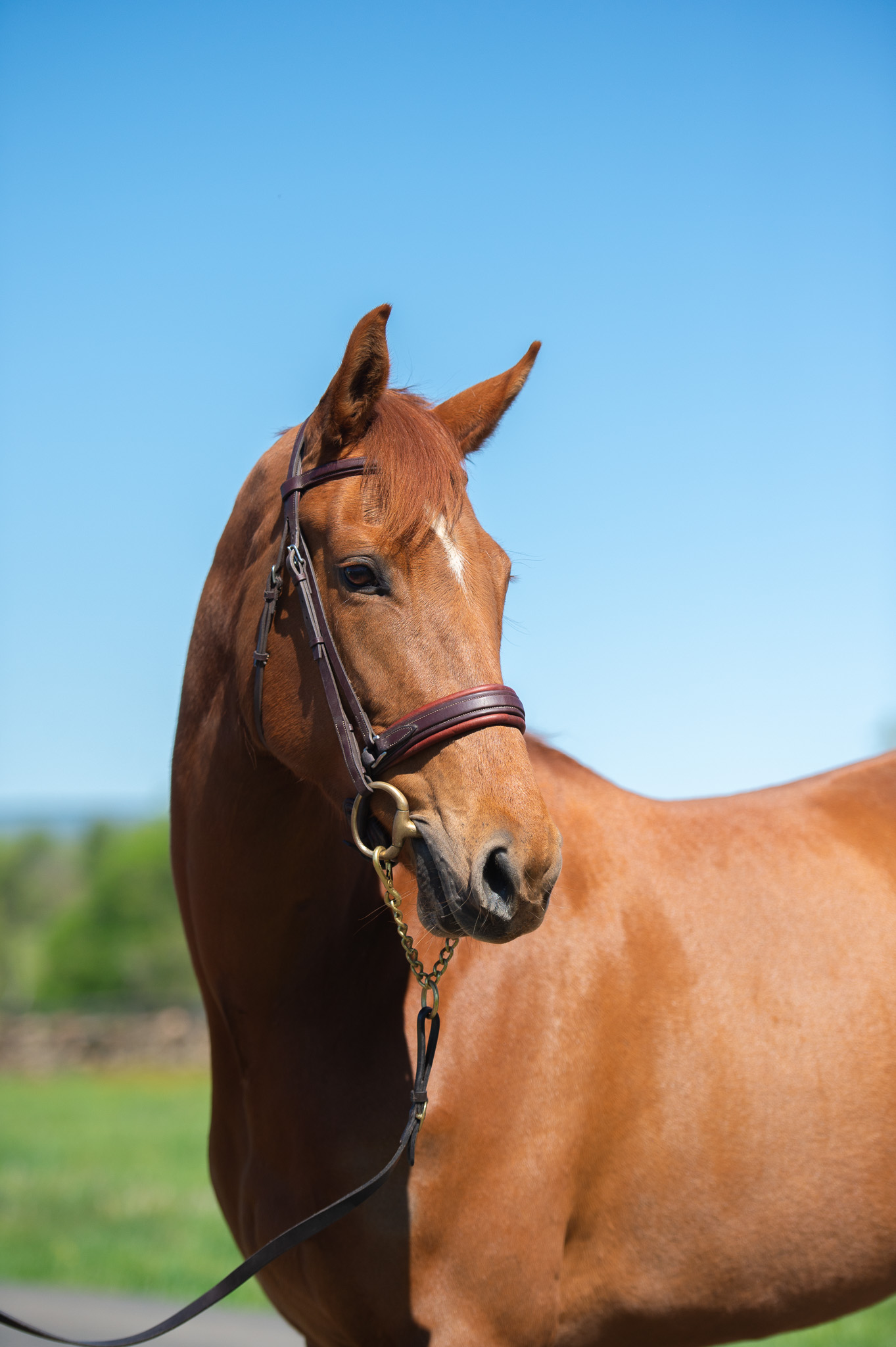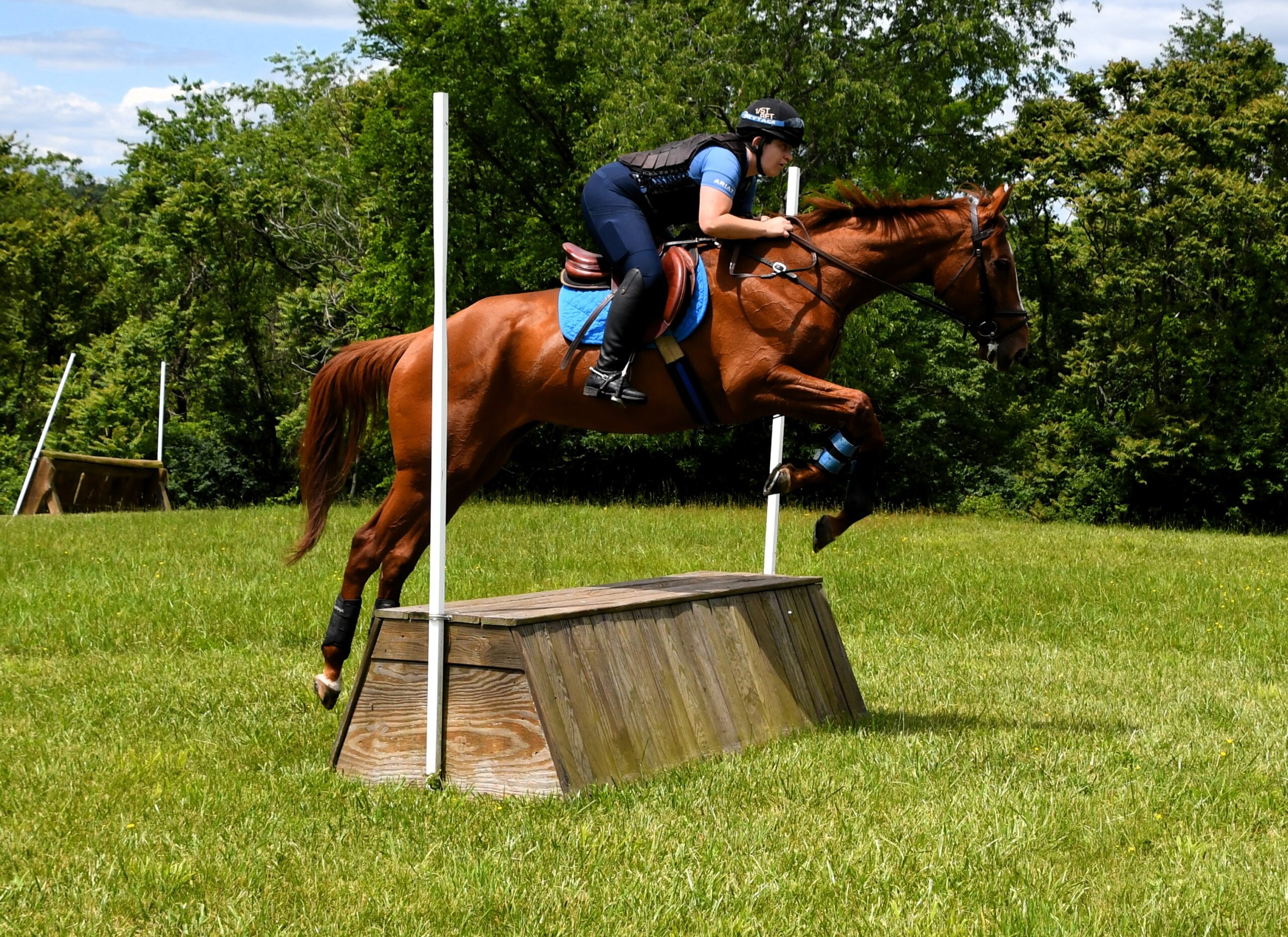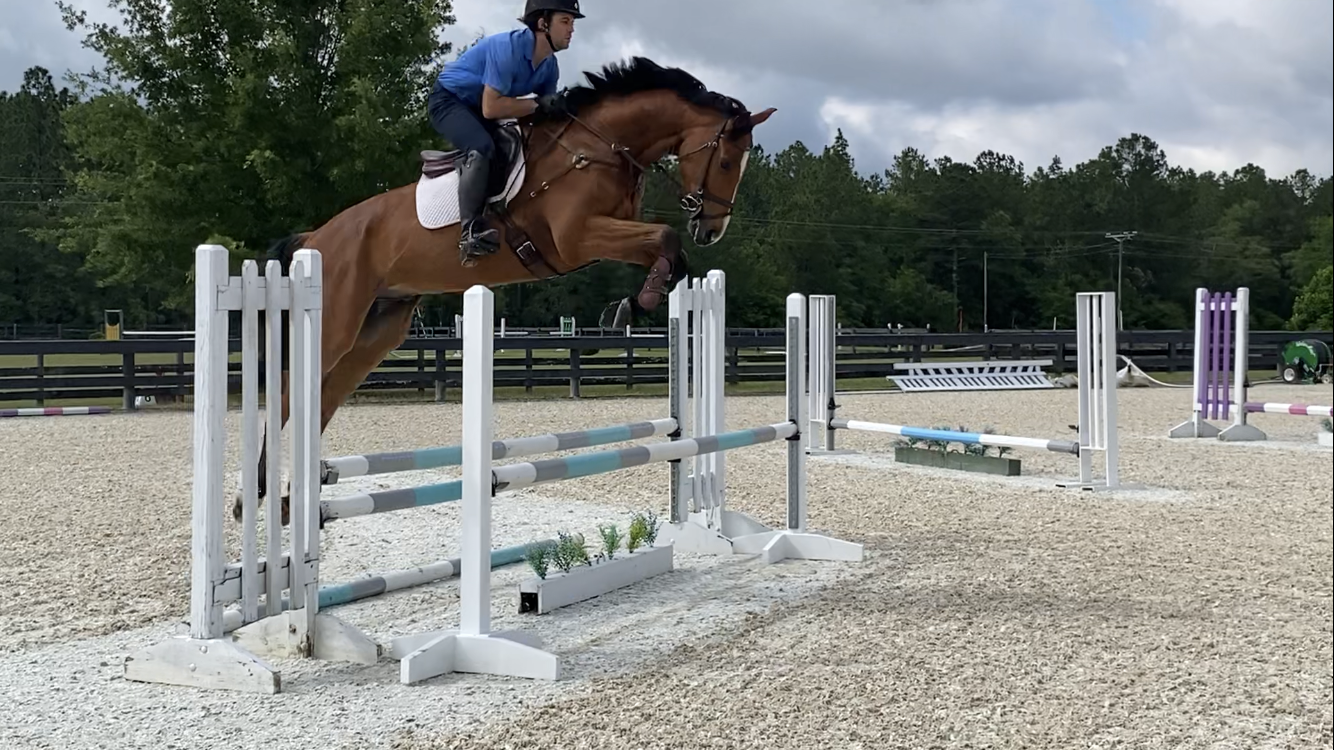
Saturday was a quintessential autumn day here in Kentucky – vivid blue skies, sunshine, leaves and a certain crispness to everything, a chill in the air, but warm with the sun on your back so coats were constantly being taken off and being put back on according to the wind and cloud formations. I couldn’t think of a more perfect way to have spent my morning than at Flying Cross Farm just outside Louisville, watching Stephen Bradley work his quiet magic on horses and people alike at a clinic for some 20 eager students who came from all over the Tri-State area courtesy of Team Engaged Clinics.
It’s hard to know if Stephen is better known as a clinician or as a competitor. He’s won Burghley CCI 4*, represented the USA at the Olympics and PanAm Games, won and been placed at Rolex many times, and so much more, as well as having earned a general reputation over the many years for being a classy, quiet, tactful, patient but effective rider. He freely admits that’s he’s old school, and he teaches much the same as he rides; classy, quiet, tactful, patient but effective; before the riders – split into groups of four or five according to ability – warm up, he brings them together for a quick chat and tells them that he intends to concentrate on the basics. From the beginner novice group up to the prelim/intermediate group the message is the same: work on the quality of the mechanics, the three main ingredients for success – straightness, going forward, and relaxation.
Stephen stressed the importance of being straight over and over again, and used the analogy of imagining being a gymnast on a balance beam whilst going over a jump or through a grid, the hind leg must follow the path of the front leg, not as simple in practice as it sounds. Try and see the corner of each eye to gauge your straightness, rather than pulling your horse’s head in any direction.

The horse must always go forward, and it must be listening to the aids, there must be constant communication between horse and rider. Stephen keeps it fairly simple, and black and white. He’ll work on the rider’s position because “the more correctly you sit, the more effective you are”.
Each session started with a short warm up on the flat, then an X, then a placing pole to the X, then gradually building up a grid. An X, one stride to a vertical, to a bounce, one stride to an oxer. All the jumps had ground lines moved quite far out, and although Stephen keeps things pretty basic he definitely isn’t afraid to crank the fences up. All the time though his manner is very calm and inspires confidence so even the most nervous riders were wont to have a go! Of course he has a keen eye for picking out the little details in rider position, little habits and tics that have become second nature, one high hand, a slightly tilting ear (horse!), and corrects them, and over the 90 minutes that each group has with him, the improvements are remarkable, but also so is the growing confidence and the pure pleasure they obviously derive from learning and “getting it”.
I asked Stephen how he stays fresh for teaching, and he looked surprised and answered immediately because he loves it! Duh! And you can tell by watching him and listening to him that it’s true. He’s engaged, he laughs, he listens. He tells one rider to imagine he’s put thumb tacks (although we call them drawing pins in England!) on her saddle to get her to sit a little lighter, and another rider to imagine he put sticky fly paper on hers to sit tighter in the saddle. He’s constantly encouraging and seeing the good things and remarking on them, and at the end of the lesson he was happy to answer all sorts of random questions about schooling exercises over the winter, tack and fitness etc. We did have one rider fall off, and I was secretly hoping she might not want to re-mount so I could volunteer to catch ride the rest of her session for her, but happily she got back on and did very well, and now I am dreaming once again of buying a project horse, and of re-training OTTB’s and like childbirth, thinking I could definitely do it all over again – horse ownership, I mean!

After the gridwork, it was time for some work on related distances, playing with adding and taking out strides, shortening the canter by adding energy. Again, Stephen was very strict about the quality of the canter, starting with the transition, and then making sure it stayed the same to, over and away from the fence. The canter should be adjustable, and yet consistent. He didn’t want riders looking for strides to a fence, but looking after the rhythm of the canter, and making sure they kept the correct cadence and energy to the fence. When one rider had a stop, and then let their horse turn away, he told us that a run out is always a rider issue, that you should never let your horse run out, rather you should have your horse stop or run into the standard with it’s nose! If your horse does stop, wait in front of the fence until you have made sure it understands what it did wrong, and what the issue is, and then when you are ready, move away from the fence to re-present.

Stephen trains on the flat with Mara Dean, and work over jumps with Philip Dutton and Katie Prudent amongst others. About a year ago Stephen was teaching a horse at a clinic that caught his eye and happened to be for sale, and that horse will campaign next year at intermediate level with him. Brandenburg’s Joshua will return to Rolex, where he has been in the top 10 three times already, goodness knows why he didn’t represent the US at the WEG earlier this autumn, and Stephen has a bunch of very nice training level horses coming up the ranks, so expect to be seeing red come spring!
Thank you as always for reading, and thank you forever to Eventing Nation & John for giving me a legitimate excuse to spend my time doing my favourite things and share them. Also while I’m doing my Oscar Speech, a big Thank You to Eventing Safety John, LOVED those Adelaide reports, and I’ve already put in a request for my accreditation next year! Go Eventing!






















